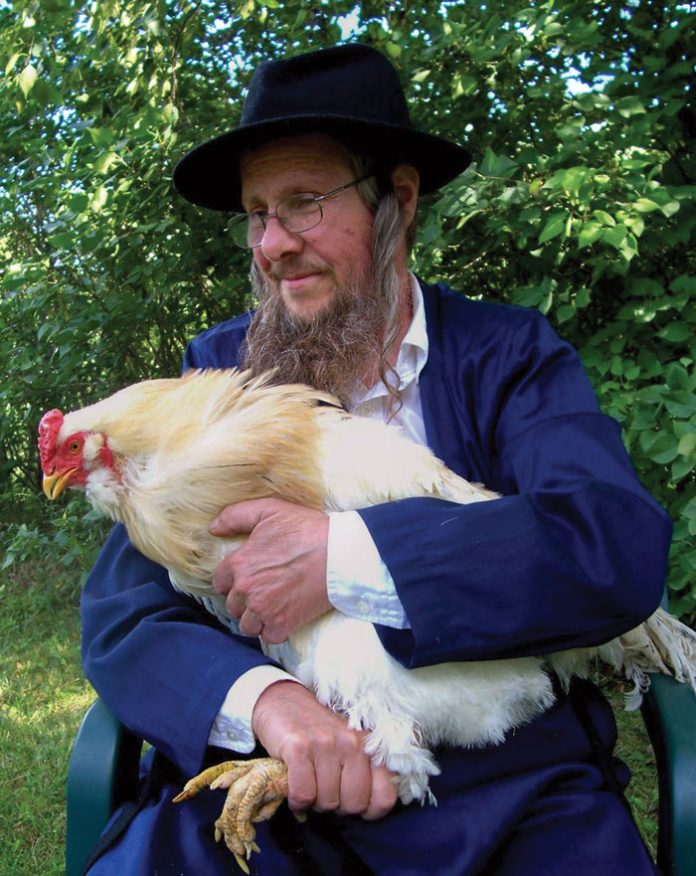“We need you to bring something into Eretz Yisrael for us.”
Aryeh was a student in Jerusalem who had gone to visit relatives in Antwerp, Belgium. Shortly before his return flight to Israel, one of the local avreichim asked him to bring a “box” with him to Eretz Yisrael.
Aryeh hesitated; bringing in items for someone else was no simple matter. He saw no reason to get involved. The avreich understood Aryeh’s unease and tried to alleviate his concern. “This isn’t a crime, chas v’shalom, and it’s certainly not dangerous,” he explained. “It’s just that bringing these items into Israel involves too many permits and paperwork.” Aryeh was nervous as the young man showed him the box and opened it up. What he saw inside astonished him. There, wrapped in layers of cotton, lay a number of white chicken eggs.
“In order to bring agricultural products into Israel,” the avreich went on, “we need to get a lot of permits, and we just don’t have the time to do it. What you will be doing is a mitzvah that will help protect halachah and kashrus. There is nothing criminal or immoral about it. If they stop you at the airport, the worst that can happen is that they will confiscate the eggs.” Aryeh was also offered $500 for his efforts and was persuaded. He put the box into his suitcase and flew to Israel. He passed through immigration and customs without any problems and the eggs arrived safely at their destination.
What Aryeh didn’t know was that his act would ignite a controversy that was about to shock the kosher poultry industry in Israel and around the world.
Chicken Production
The typical chicken you might buy at the butcher or supermarket starts its life in a poultry farm. The chicken we are familiar with is usually a plump, white-feathered bird with a red comb and short legs. It pecks and clucks for several weeks until it reaches the “right” size and is sent to the slaughterhouse.
But that was not always the case; there are dozens of breeds of chickens. If you look at pictures in children’s storybooks you can see that chickens were once multicolored, speckled and spotted. The roosters stood tall and proud, with ruffles of colored feathers around their necks and streaks of color—copper, black or red— on their lean frames. In particular, a species called Baladi or “Arab chicken” was common throughout the Middle East and Europe.
Almost every country had its own native species: Some lay more eggs, some fewer; some are plumper and produce more meat; and some are leaner and their meat is of poor quality. In 1946 Dr. Howard Pierce, the director of a large American poultry company, decided that it was time to find the “ultimate chicken,” one that would meet the needs of the poultry industry.
More than 1,000 chickens entered the competition and the most suitable one was chosen, which earned its owner a prize of $5,000. It was a fat chicken that grew quickly but ate little, thus becoming the preferred chicken of the industry.
Since then a number of giant agribusinesses have been established. Millions of dollars have been spent researching the production of poultry. Aviagen is one of the largest chick-producers, marketing its baby chicks all over the world, including Israel. Another company is Cobb-Vantress, whose “Cobb500” is the most common chicken in the international industry. According to its website, this chicken “has the lowest feed conversion, best growth rate, and an ability to thrive on low-density, less costly nutrition.” Through a combination of hybridization of varieties and genetic engineering, companies such as these have succeeded in producing poultry that is especially suited to the needs of the industry. The result is a low-fat chicken that grows fast, with a chest so large and legs so small that it cannot really walk. These birds have also been bred to produce fewer feathers because they are no longer needed to fly or keep warm, and removing them during processing is time-consuming. Companies are now able to produce chickens with maximum efficiency, with approximately one kilogram of meat per one kilogram of chicken feed.





















